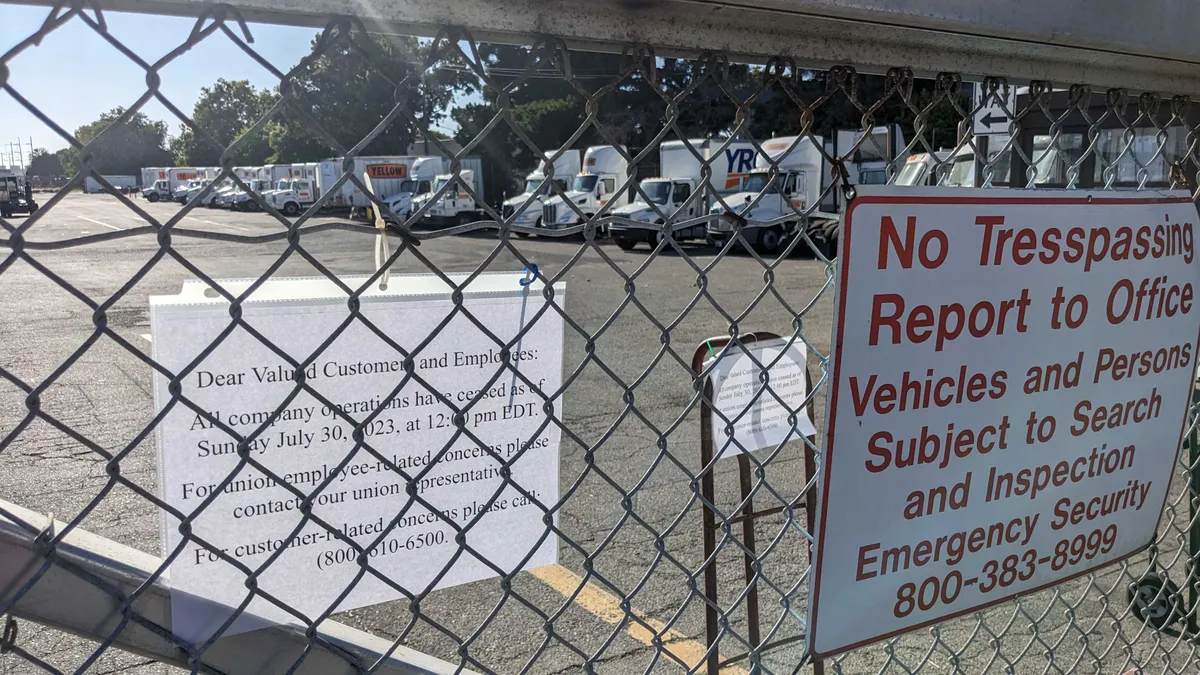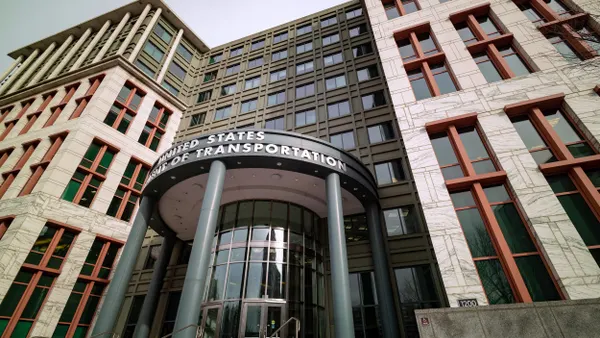It’s not yet clear who would win a possible bidding war for Yellow Corp.’s real estate.
Old Dominion Freight Line’s $1.5 billion stalking horse offer set the base value of the 169 terminals. But the facilities could potentially go to an even higher bidder — or be sold piecemeal to a group of smaller bidders.

“It can be a very value-maximizing process,” said George Singer, bankruptcy attorney and partner at Holland & Hart. “The bankruptcy itself drives value.”
Horse-trading of Yellow’s assets is likely to take place during an Oct. 18 auction, if it isn’t happening already, Singer said.
Singer is not involved in Yellow’s case but has been following it and shared his insights with Trucking Dive in a phone interview.
This interview has been edited for brevity and clarity.
TRUCKING DIVE: What did you think of the Old Dominion and Estes Express Lines bids?
GEORGE SINGER: It’s obviously great news for the company, and its creditors — particularly the value of the bids. Right now, Yellow’s total secured debt, including government debt, is $1.4 billion. So, to get offers of $1.3 billion from Estes and $1.5 billion from Old Dominion is a breath of fresh air for the debtor and its creditors.
What are your expectations for a real estate auction?
SINGER: They seem to have this on track for an October auction and sale transaction. Since you have this interest right away, it looks like it's going to be a pretty robust action, at least between these two bidders.
In an auction, are assets more likely to go to a stalking horse bidder, or piecemeal to multiple parties?
SINGER: Their auction process accommodates both. When you get into auctions, it's a very dynamic and fluid thing. And I've often seen a number of different bidders put together a value that, with separate pieces, beats a stalking horse bid for the whole thing. That is a very frequent thing. It also increases the risk, because it relies upon the creditworthiness and financial wherewithal of every player in that mix. But usually you vet that before you go into the auction.
It isn't always the case that someone that is bidding on a whole gets it, because the sum of the parts can be greater than the whole.
What doesn’t the public get to see about this process?
SINGER: What happens in the auction rooms. You deal with pieces and there's a lot of horse-trading that sometimes goes on back and forth.
Where the auction is held depends on how many actual bidders are going to be there. But it will take a couple days, I suspect, and there'll be horse-trading going back and forth between the debtors and their professionals. People don't get to see that dynamic, but it's a very, very interesting process.










